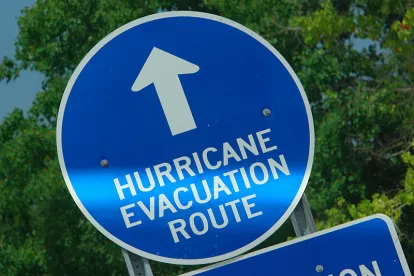On August 25, 2017, and September 10, 2017, President Trump declared major disasters in Texas and Florida due to Hurricanes Harvey and Irma (the “Hurricanes”). Following the declarations, the Internal Revenue Service (“IRS”), the Department of Labor (“DOL”) and the Pension Benefit Guaranty Corporation (“PBGC”) issued relief for affected individuals and entities. The IRS is postponing certain tax filings and payment deadlines for taxpayers who reside or work in the disaster area. The relief also provides qualifying individuals with expanded access to their retirement plan assets to alleviate hardships caused by the Hurricanes. Additional IRS guidance allows donation of employer-paid leave to charitable organizations aiding victims of the Hurricanes.
The DOL is providing additional relief to employers and plan fiduciaries, in the form of deadline leniency and relaxation of fiduciary requirements for benefit plans that have compliance lapses resulting from the Hurricanes. Finally, the PBGC is waiving certain penalties and extending certain filing deadlines. Below is a summary of the relief provided by the IRS, DOL, and PBGC. Additional relief is sure to follow for victims of Hurricane Maria in Puerto Rico and the U.S. Virgin Islands.
Extension of Filing Deadlines
IRS News Releases TX-2017-09 and FL-2017-04 (the “Releases”), issued on August 30, 2017, and September 12, 2017, respectively, extend the Form 5500 filing deadline for plan sponsors with their principal place of business in the disaster areas identified on FEMA’s website (links below) until January 31, 2018, provided the return had an original or extended due date falling on or after August 23, 2017, for those in the Texas disaster area, or September 4, 2017, for those in the Florida disaster area.
Relaxation of Hardship Distribution and Plan Loan Requirements
IRS Announcements 2017-11 and 2017-13 (the “Announcements”), issued on August 30, 2017, and September 12, 2017, respectively, relax certain verification procedures that may be required under retirement plans with respect to loans and hardship distributions. This relief allows qualifying individuals to quickly access assets in their “qualified employer plan” to alleviate hardships caused by the Hurricanes. Qualifying individuals include employees and former employees who have a principal residence or place of employment on August 23, 2017, located in one of the Texas counties identified on FEMA’s website, available through the link provided below, or on September 4, 2017, located in one of the Florida counties identified on FEMA’s website, also available through the link below, or who have a son, daughter, parent, grandparent, or other dependent with a principal residence or place of employment in one of the affected counties on that date, even if the plan participant lives elsewhere (“Qualifying Individuals”).
For a current list of Texas counties included in the disaster declaration, see: https://www.fema.gov/disaster/4332
For a current list of Florida counties included in the disaster declaration, see:
https://www.fema.gov/disaster/4337
The amount available for a hardship distribution is limited to the maximum amount permitted under the retirement plan and the IRS rules, and the distributions are taxable and subject to the 10% percent excise tax that normally applies to a payment made before age 59-1/2. However, Qualifying Individuals can use hardship proceeds for any hardship arising from the Hurricanes, including costs that would not typically qualify for a distribution, such as acquiring food and shelter. Also, the usual requirement to suspend deferrals for six months after a hardship distribution does not apply.
Plan administrators may rely on a Qualifying Individual’s representations as to the need for and amount of the hardship distribution, unless the plan administrator has actual knowledge to the contrary. If the Qualifying Individual does not provide documentation supporting the amount necessary to satisfy the hardship at the time of the distribution, the plan administrator must try to obtain any required documentation from the participant as soon as practicable.
The IRS is also relaxing procedural and administrative rules that may apply to plan loans for a need arising from the Hurricanes. For example, if spousal consent is required for a loan or hardship distribution and the participant claims his or her spouse is deceased, the plan may make the loan or distribution to a Qualifying Individual in the absence of a death certificate if it is reasonable to believe, under the circumstances, that the spouse is deceased, and the plan administrator makes reasonable efforts to obtain a copy of the death certificate as soon as practicable.
For purposes of the Announcements, a “qualified employer plan” includes a plan that meets the requirements of Code Sections 401(a), 403(a), and 403(b), or a plan described in Code Section 457(b). Defined benefit plans and money purchase pension plans qualify, only with respect to hardship distributions from separate accounts, such as rollover or employee contribution accounts.
Qualified employer plans are not required to follow this guidance. If a qualified employer plan did not allow for loans or hardship distributions prior to the Hurricanes, the plan may nonetheless choose to allow loans and hardship distributions to Qualifying Individuals under the IRS guidance, provided the plan document is amended to allow for the loans and/or hardship distributions by the end of the first plan year beginning after December 31, 2017 (December 31, 2018, for calendar year plans). To qualify for relief, the plan loan or hardship distribution must be made no earlier than August 23, 2017, and no later than January 31, 2018.
Charitable Donation of Employer-Paid Leave
IRS Notices 2017-48 and 2017-52, issued on September 5, 2017, and September 14, 2017, respectively, allow employees to donate paid leave time to victims of the Hurricanes. Employees can “trade” their paid vacation, sick, and personal leave days in exchange for a cash payment from their employer to charitable organizations providing relief to those affected by the Hurricanes. To qualify, the employer must make the payments before January 1, 2019. The cash donation is not included in the income or wages of the donor-employee, and employers can deduct the cash payments as a business expense. However, employees cannot claim a charitable deduction for the value of the donated leave.
DOL Compliance Guidance
The DOL announced its Hurricane Harvey relief for employee benefit plans in an August 30, 2017, news release. On September 15, 2017, the DOL extended the relief to victims of Hurricane Irma. Accordingly, the following guidance applies to victims of both Hurricanes.
The DOL will not seek to enforce the timely deposit requirements under ERISA if there are temporary delays in forwarding participant loan payments and/or contributions to an employee benefit plan, to the extent that affected employers and service providers “act reasonably, prudently and in the interest of employees” to comply as soon as practical under the circumstances. In addition, the DOL will not enforce violations for late blackout notices where the notice could not be timely provided due to the Hurricanes.
The DOL also recognized that health plan participants may be unable to timely file claims for benefits and COBRA elections, and directed plans to, again, act reasonably, prudently, and in the interest of covered employees and their dependents. The DOL specified that plans should make reasonable accommodations to prevent a loss of benefits, including flexibility on deadlines. For compliance issues experienced by group health plans as a result of the Hurricanes, the DOL will emphasize compliance assistance and include grace periods and other relief where appropriate. Such relief is appropriate where there has been a physical disruption to the plan or service provider’s principal place of business, making compliance with the time frames in the claims and appeals procedures impossible.
Finally, on August 29, 2017, the DOL issued FAQs for plan participants and beneficiaries in the affected counties regarding how to address issues arising from Hurricane Harvey. These FAQs also apply to victims of Hurricane Irma. Plan sponsors should consider sharing this information with participants who may have been impacted.
PBGC Relief
Disaster Relief 17-09, issued on August 29, 2017, and Disaster Relief 2017-11, issued on September 12, 2017, extend the deadline for PBGC premium filings by affected plans until January 31, 2018, provided, for plans affected by Hurricane Harvey, the premiums had a due date falling on or after August 23, 2017, and before January 31, 2018, and, for plans affected by Hurricane Irma, the premiums had a due date falling on or after September 4, 2017, and before January 31, 2018. Although late payment penalties are waived, applicable interest charges are not.
The PBGC also extended to January 31, 2018, the deadline for the following, provided that, for plans affected by Hurricane Harvey, the original deadline fell on or after August 23, 2017, and before January 31, 2018, and, for plans affected by Hurricane Irma, the original deadline fell on or after September 4, 2017, and before January 31, 2018:
-
Filing reportable event post-event notices with the PBGC;
-
Requesting reconsideration or appeal of a PBGC determination;
-
Filing a single-plan termination notice or distressed termination notice; and
-
Filings by multiemployer plans.
PBGC will apply a “case-by-case” approach in determining whether other filings that involve particularly important or time-sensitive information can be delayed, including filings of ERISA 4010 notices, notice of a reportable event where advance notice is required, and Form 200 for large missed contributions.
The PBGC relief is available to any person responsible for meeting a PBGC deadline (e.g., a plan administrator or contributing sponsor) that is either located in the affected Texas or Florida counties or otherwise unable to reasonably obtain information or other assistance needed to meet the PBGC deadline from a service provider, bank, or other person located in the disaster areas.
Qualified Disaster Relief Payments
Code Section 139 allows for qualified disaster relief payments from employers to employees affected by a declared disaster. For victims of the Hurricanes, qualified disaster relief includes the following reasonable and necessary amounts paid directly or reimbursed by employers:
-
Personal, family, living, or funeral expenses incurred as a result of the Hurricanes, and
-
Expenses incurred to repair a personal residence (including a rental home), or to repair or replace its contents, where the damage is a result of the Hurricanes.
To be a qualified disaster relief payment, the payment cannot cover expenses already or to be compensated by insurance (or other) proceeds. Qualified disaster relief payments are not taxable to the employee, nor are they subject to income or employment tax withholding, and they are deductible by employers.







 />i
/>i
